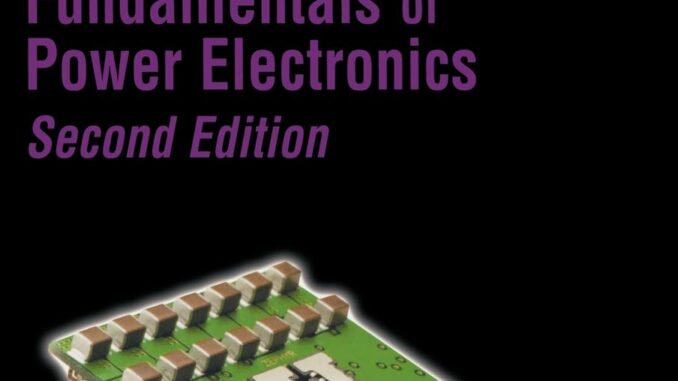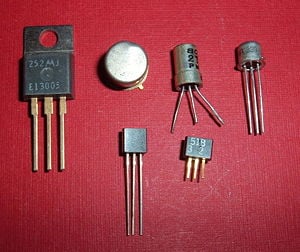
Power electronics is all about controlling the flow of electrical energy by switching electronic circuits. The concept of power converters, power inverters, motor drives, switching power supplies, and so on is based on technology. Mercury-Arc valves were the first high-power electrical devices. This was a type of electrical rectifier that converted high alternating current to direct current.
Today’s power electronics employ components such as diodes, GTOs, and transistors, among others. A significant proportion of electronic energy is processed in power electronics. The most popular form is an AC/DC converter, which is found in the majority of our everyday electrical gadgets such as computers, battery chargers, and television sets. Semiconductor
Table of Contents
Power Devices
The most significant devices required in the construction of energy systems are electronic switches capable of managing high voltage and current operations at high frequency (HF).

Power Electronics -based conversion systems. For this discussion, the term “ideal switch” shall be defined.
One of the fundamental subjects for an electrical engineer in power electronics.
This is a basic overview of the numerous subtopics within power electronics.
Understanding alternating current and direct current
Electricity can flow in two directions: alternating current and direct current. The difference between the two is the direction in which the electron flows.
DC and alternating current
Thomas Edison invented direct current electricity by producing a magnetic field near a wire, which caused electrons to flow in a single direction, from negative to positive.
Nikola Tesla invented alternating current power because it was a safer technique to transmit power over long distances in cities. He employed a rotating magnet instead of a steady magnet. As the position of the magnets varied, so did the flow of electrons.
Rectifier
This is a piece of electronic equipment that converts alternating electricity to direct current. This entire procedure is known as rectification. Rectifiers come in a variety of shapes and sizes, including mercury arc valves, semiconductor diodes, and different silicon-based semiconductor switches.
What Is the Difference Between Diodes, GTOs, and Transistors?
Diodes: It’s a semiconductor devices with two terminals that permit current to flow in only one direction. It has a low current resistance in one direction and a very high resistance in the other. It is a vacuum tube with two electrodes: an anode (plate) and a heated cathode.
diode vacuum tube
The first semiconductor electronic device was a semiconductor diode. Most diodes are composed of silicon, however, selenium or germanium are also used on occasion. Because a diode permits electric current to flow in only one direction, it is employed as a rectifier to convert AC to DC.
Diodes are also employed as signal limiters, voltage regulators, switches, signal modulators, signal mixers, and other similar applications.
GTO stands for Gate Turn-Off Thyristor and is a high-power semiconductor device. It is distinct from a standard Thyristor. In contrast to these, a GTO features a completely controllable switch that can be turned on and off using a third lead, the Gate lead.
A typical thyristor lacks a completely controllable switch, which may be turned on and off at a whim. When it is switched on or fired, it remains turned on until it is shut off.
This could be anything from a reverse voltage to the current flowing falling below a specific value.
A gate signal with negative polarity can turn on a GTO while one with positive polarity can turn it off.
Transistors are semiconductor devices used to amplify and switch electronic signals and power. There are three terminals on a transistor. When a voltage or current is applied to one pair of terminals, it is transmitted to the other pair. A transistor may amplify signals, therefore its output power can be greater than its input power. The majority of transistors are found in integrated circuits.
The transistor has three leads: base, collector, and emitter. MOSFETs are widely utilized transistors.
MOSFET is an acronym that stands for Metal Oxide Semiconductor Field Effect Transistor. This is a type of transistor used to enhance or switch electronic signals. Even though a MOSFET has four terminals (Source, Gate, Drain, and Body). However, because the Body Terminal and the Source Terminal are frequently connected internally, just three terminals appear in electrical schematics. One of the most ubiquitous transistors in both digital and analog circuits is the MOSFET.
After the advent of the first solid-state power switch, the silicon-controlled rectifier (SCR), in 1957, power electronics (PE) witnessed significant growth. Today, practically all technologies that require power control make use of Power Electronics technology.
Power electronics will continue to be an enabler in meeting our future electricity needs. New power devices with more power, higher frequency, and reduced losses are predicted to be invented in the future. Global energy problems will pique public interest in increasing conversion efficiency and expanding the use of Power Electronics in power quality, distributed production, energy conservation, and smart grids. The integration of power and control circuits into functional modules will result in highly integrated system solutions in packaged devices.

Leave a Reply